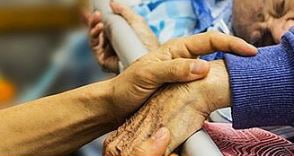 Everyone knows how the pandemic walloped the elderly in 2020. Nursing homes became the epicenter of COVID-19 deaths. No, Mr. Sinatra, it was not “a very good year” for the elderly.
Everyone knows how the pandemic walloped the elderly in 2020. Nursing homes became the epicenter of COVID-19 deaths. No, Mr. Sinatra, it was not “a very good year” for the elderly.
Pandemic Impact
- During 2020 more than 700,000 cases of COVID-19 occurred among long-term-care residents and the staff who assisted them.
- COVID-19 killed 104,973 residents of nursing homes in 2020.
- Only 1% of the U.S. population resided in nursing homes yet nursing home residents accounted for 39% of all COVID-19 deaths in 2020.
- With a “no visitors allowed” quarantine in place, long-term-care residents experienced a deepening sense of isolation creating a new crisis that took a measurable emotional toll on the elderly.
- Forced to settle for FaceTime or Zoom meetings, family members began to experience deepening duress that added to the anxiety caused by the persistent threat of contagion and serious life-threatening illness.
- As a result, many older adults and their families are reconsidering institutionalized long-term care. Occupancy in skilled nursing facilities has declined by 10% since the pandemic began. Deaths have contributed to that decline, but so have pre-emptive decisions to receive care at home or in other settings.
A Crisis Still Looms
The pandemic has only deepened the impending crisis surrounding long-term care for a rapidly aging population.
- About 70% of Americans over the age of 65 will need long-term care services during their lifetime. In 2020, this number already exceeded 12 million.
- Over the next 20 years, the number of Americans age 65 and older will more than double to 71 million, comprising roughly 20% of the U.S. population.
- In 2020, the median annual nursing-home private room cost was $105,850/year.
- The estimated lifetime cost of care for someone with dementia was $321,780.
- The expected increase in Medicaid spending for long-term care between 2016 and 2026 is 38%.
- In 2020, 41 million people provided $470 billion worth of unpaid care for family members in the United States.
- Although the pandemic has caused families to rethink long-term care institutions, the dramatic rise in two-provider households, single mothers, and dissolving family units is shrinking the pool of unpaid care providers. In 2010 there was an average of 7 potential caregivers for every person over 80. In 2030 that number is expected to shrink to 4.
Troublesome Trends
The devastation of COVID-19 has also exacerbated already-existing caregiver shortages. While occupancy rates have declined at long-term care facilities, in-home care is inherently more labor-intensive. There are many reasons for the caregiver shortage, including low pay and stricter U.S. immigration laws. A shift to more home-based care is apt to worsen the caregiver shortage.
And so-called “unpaid care” has a cost. Between 13% and 22% of caregivers are employed, and 70% reported experiencing work-related difficulties because of their caregiving responsibilities. A third of the people providing long-term care at home describe their own health as fair or poor, and an additional third are 65 or older.
A Word to the Wise
The mortal threat of COVID-19 has naturally distracted us from this looming long-term care crisis as our population relentlessly ages. As we begin to turn our attention to recovery, policy-makers are reminded that this continuing long-term-care crisis has not gone away; if anything, it has gotten worse.

